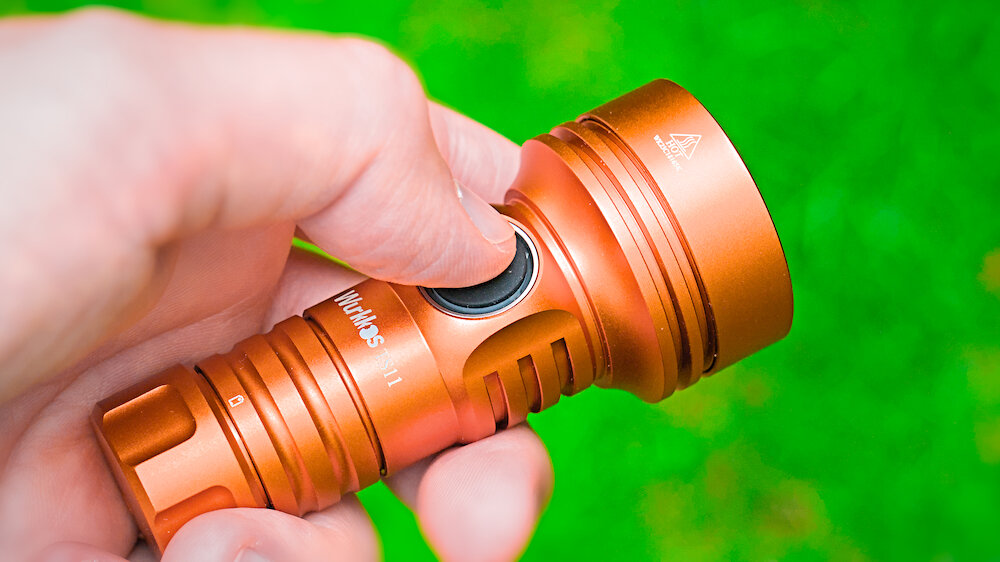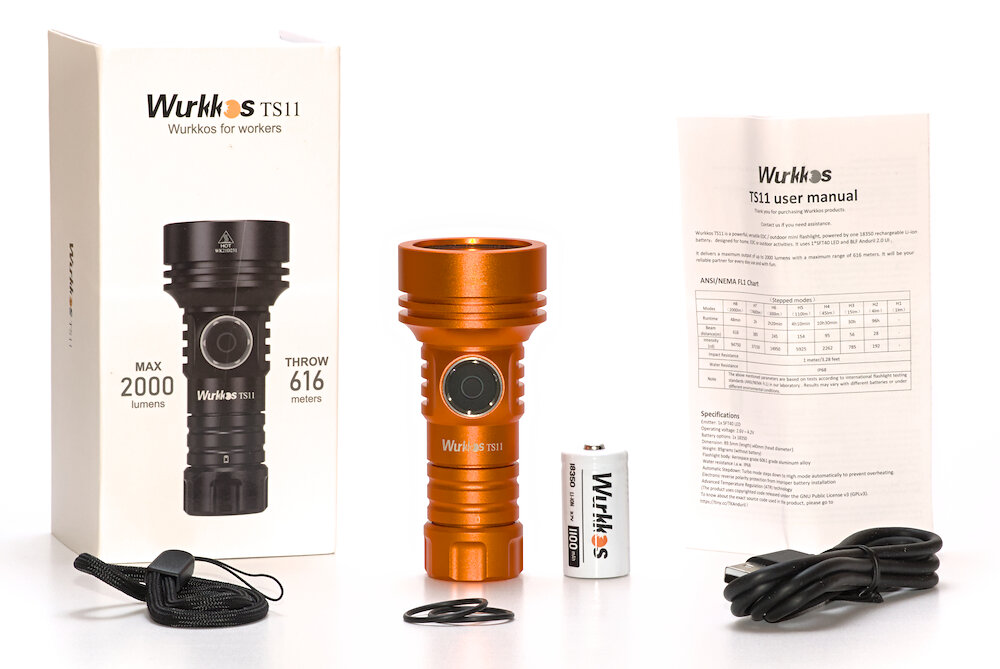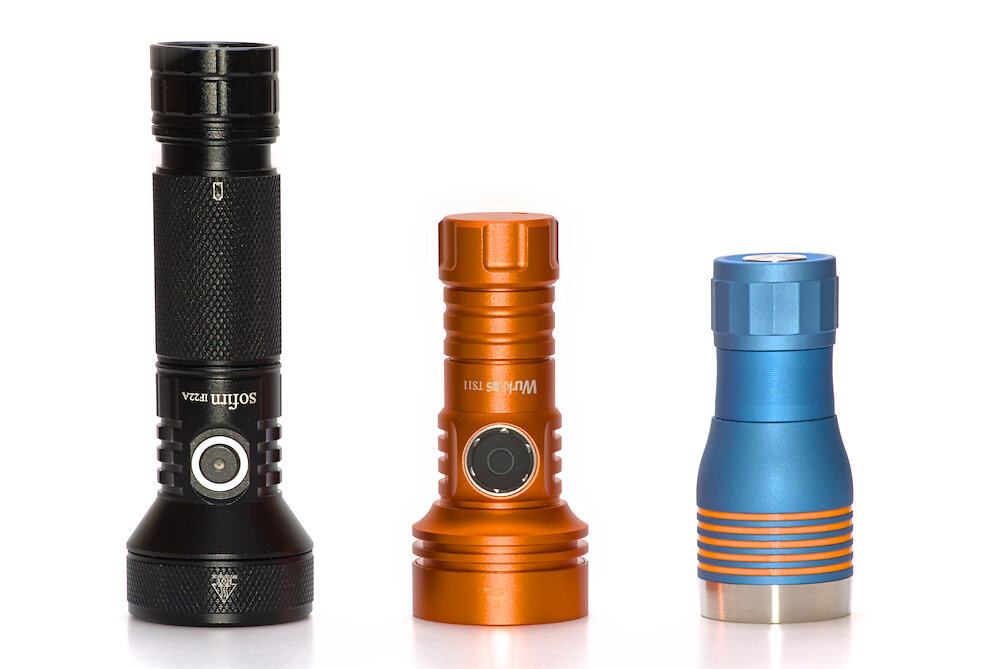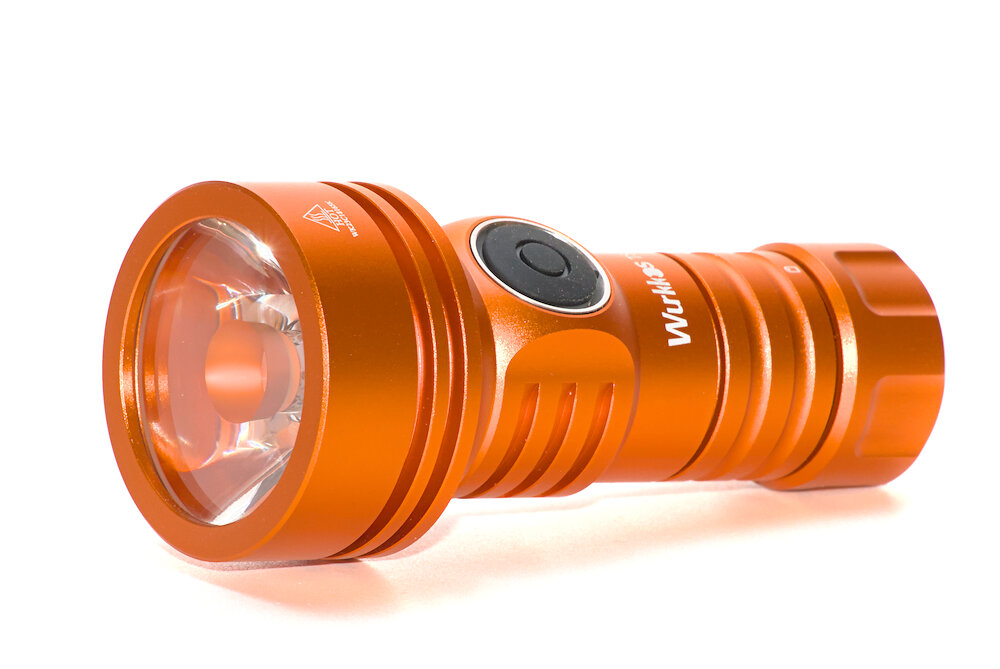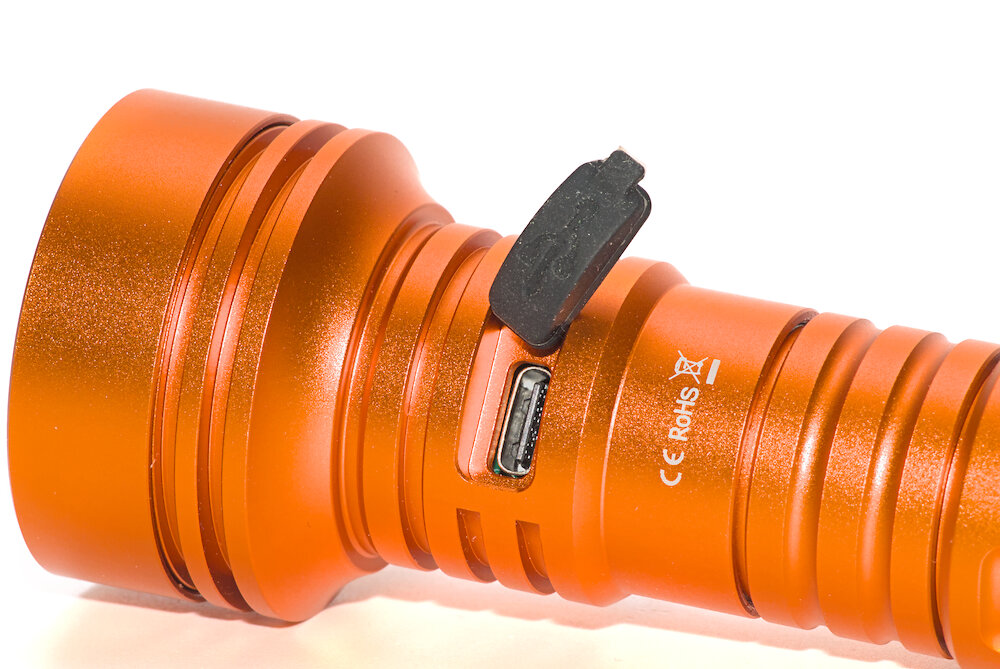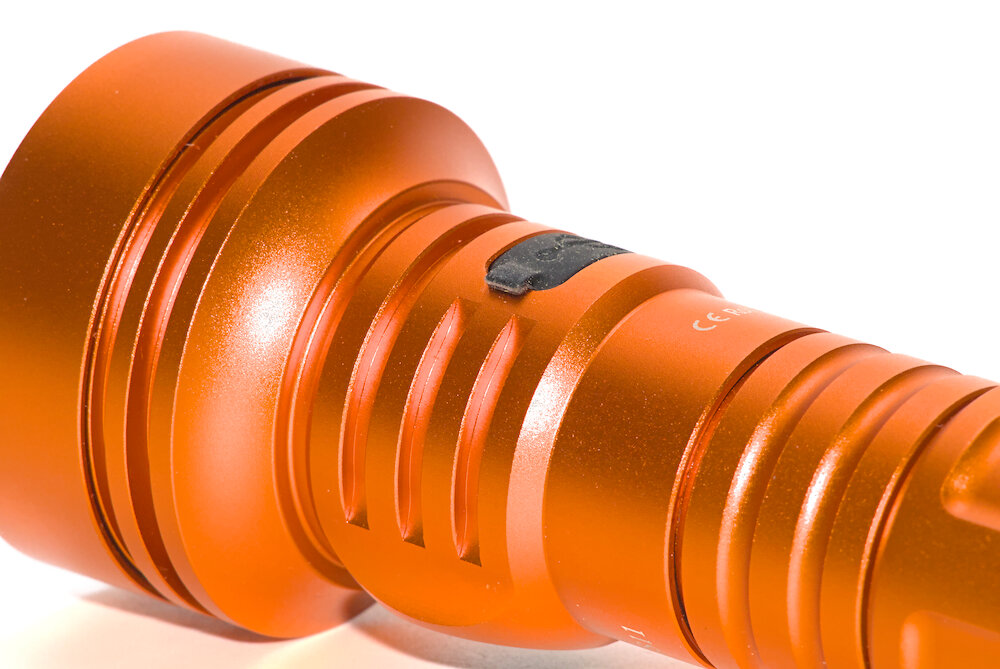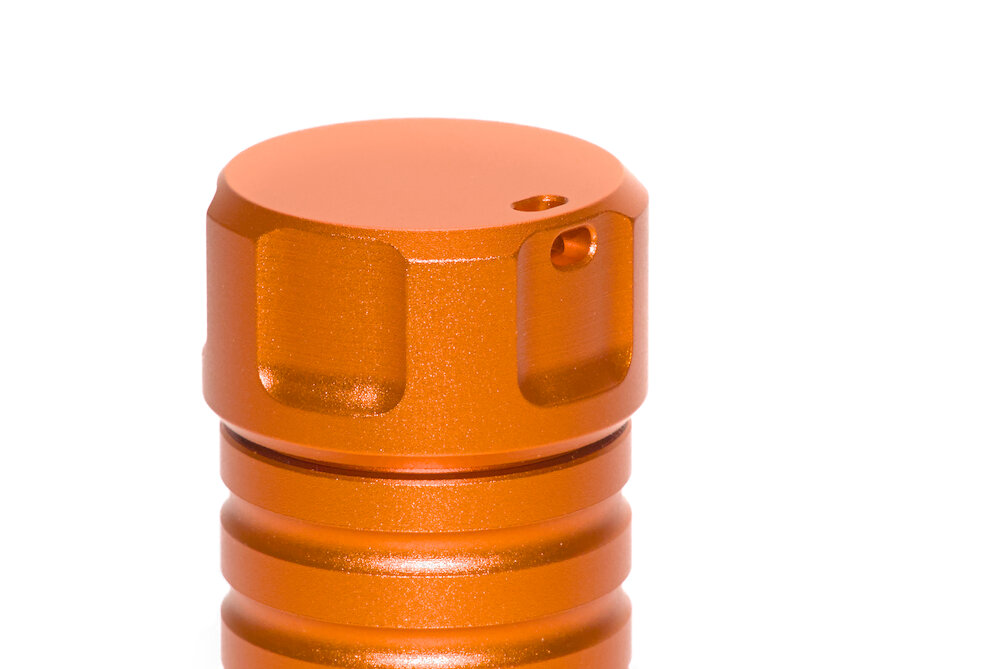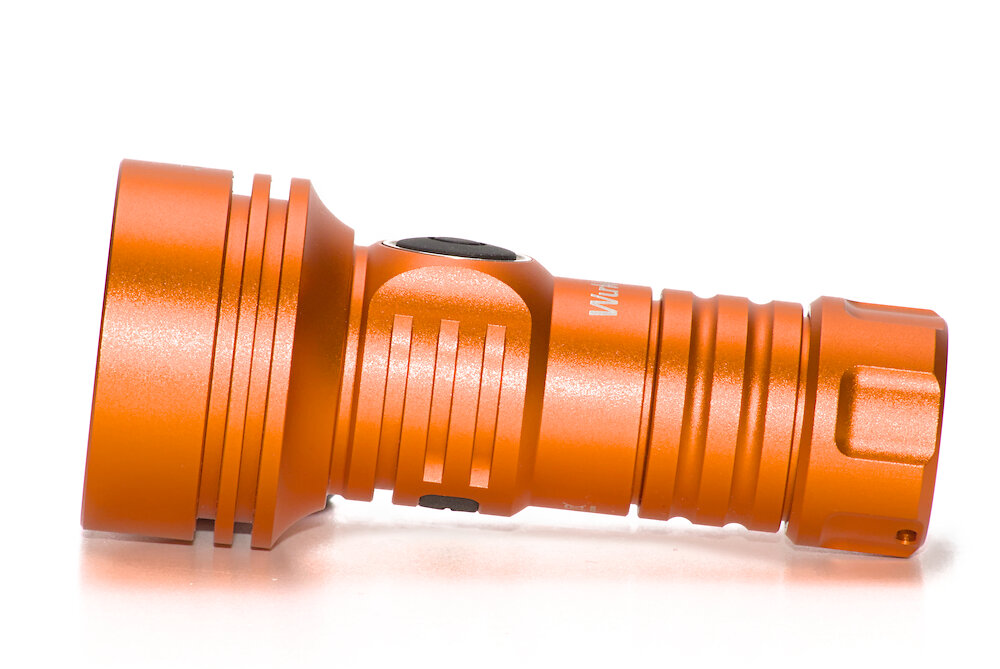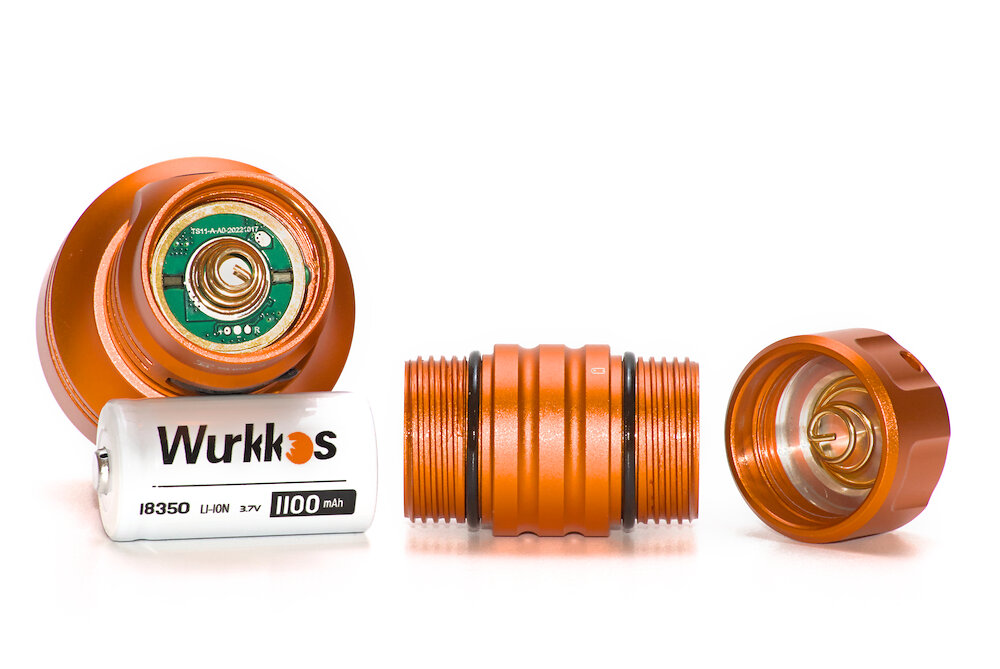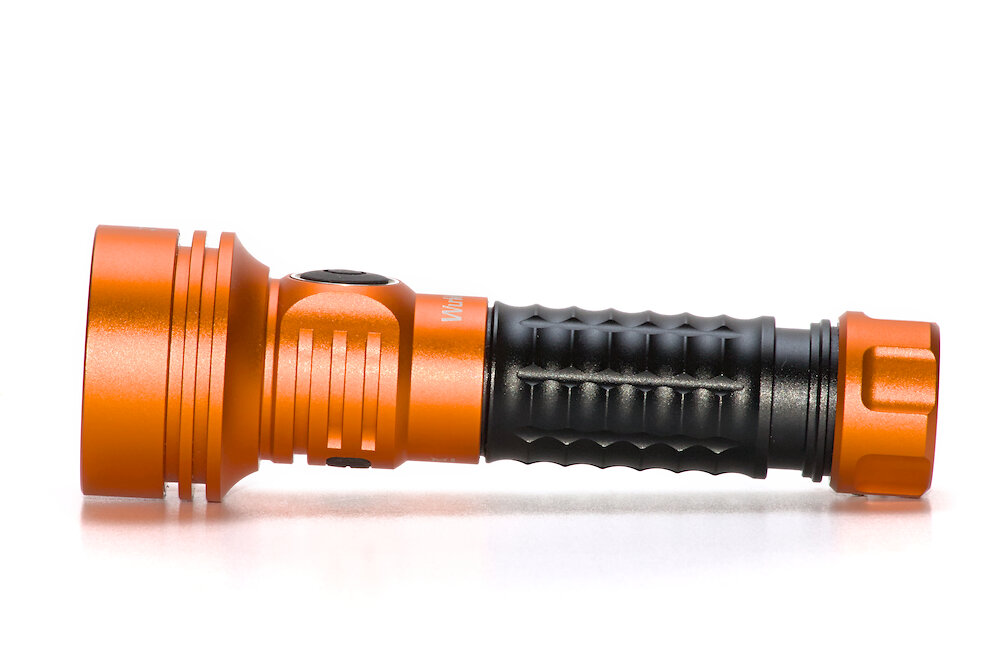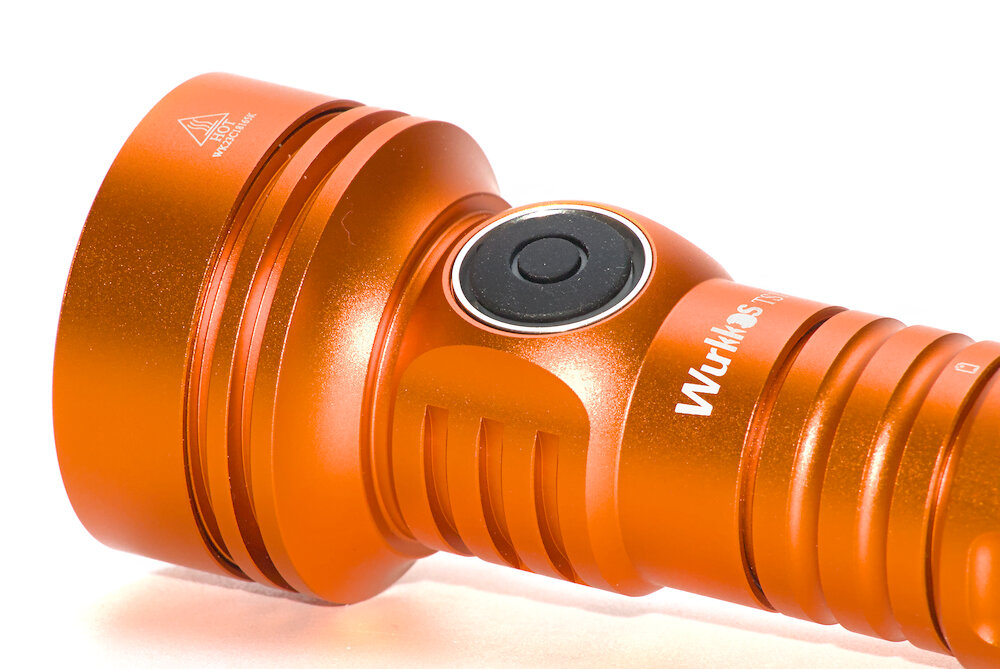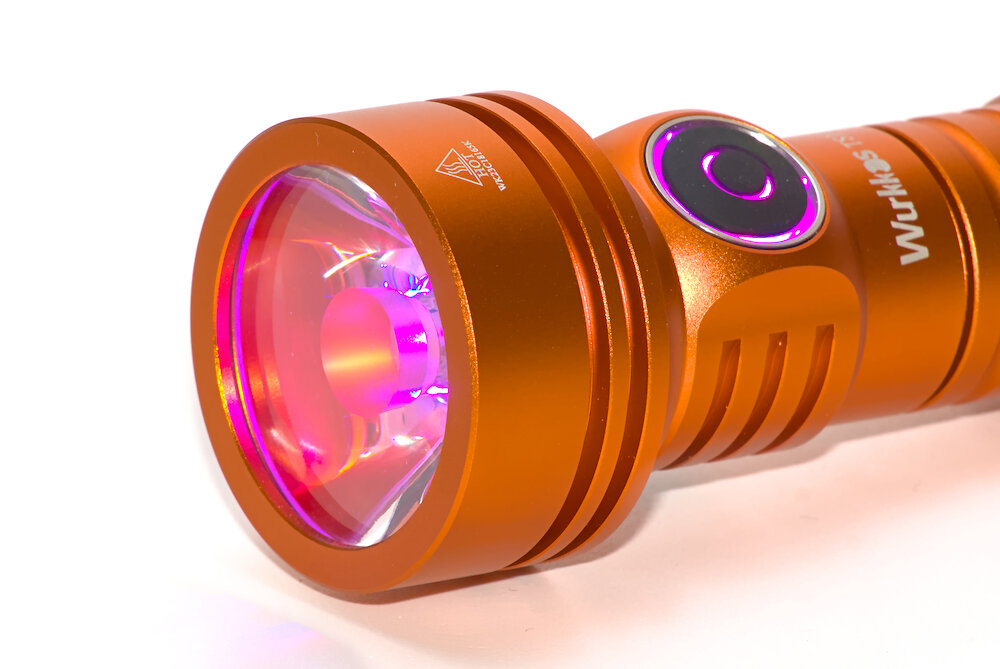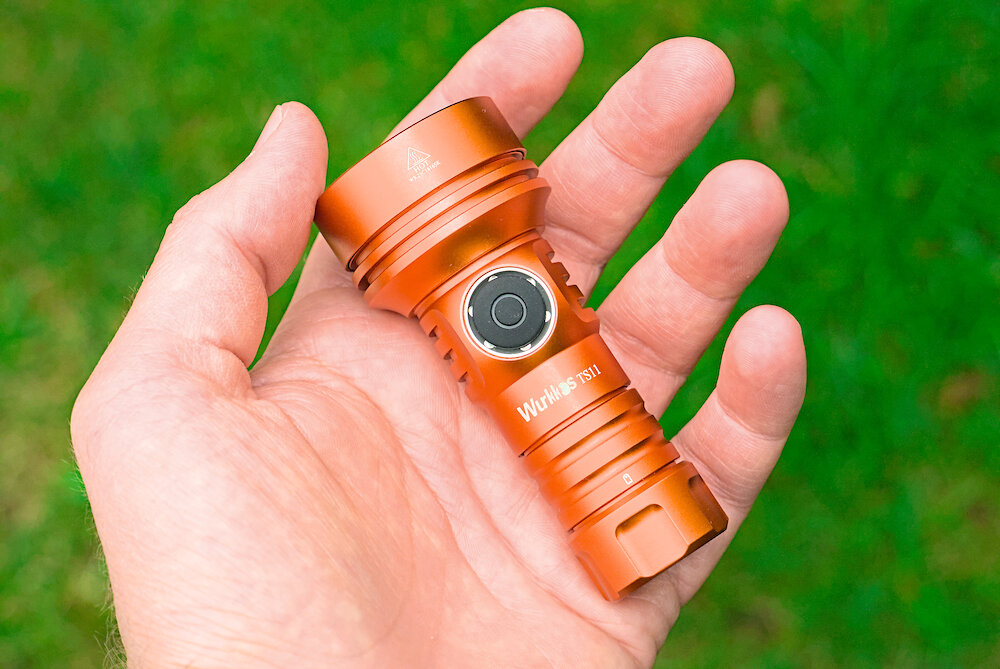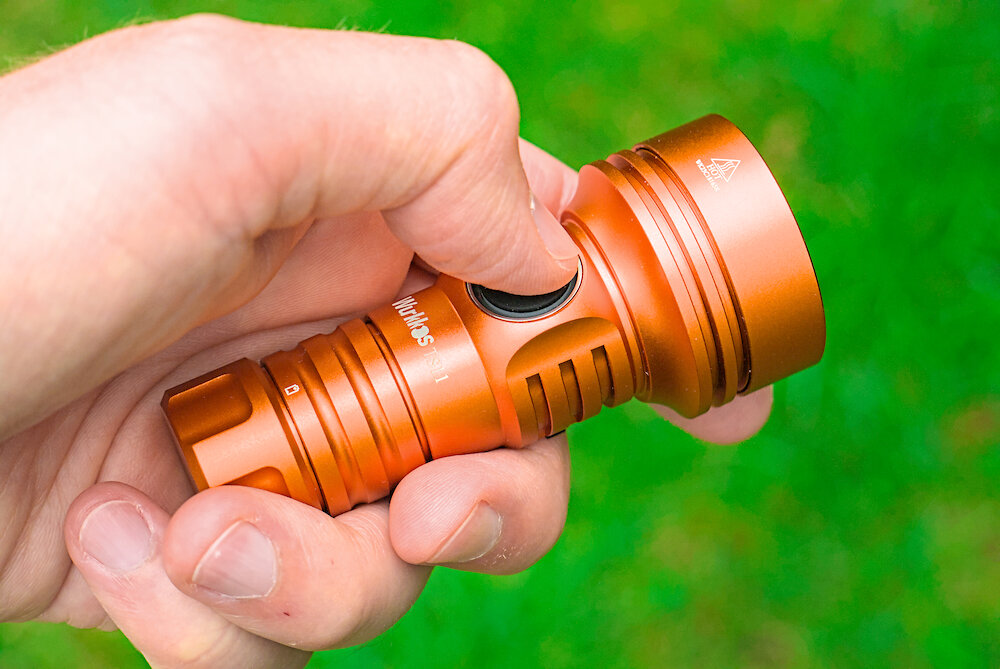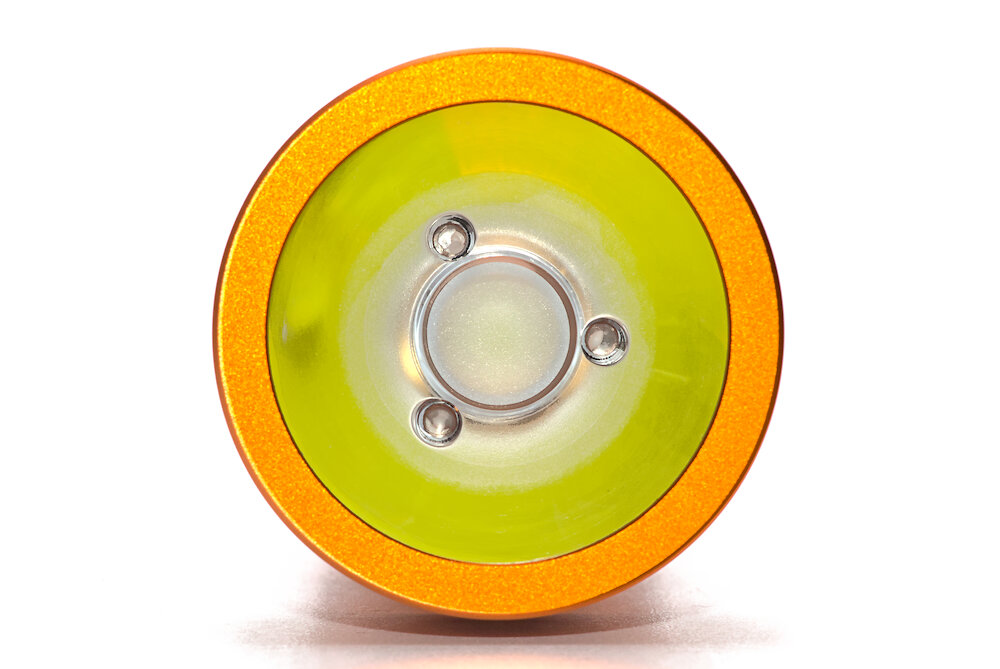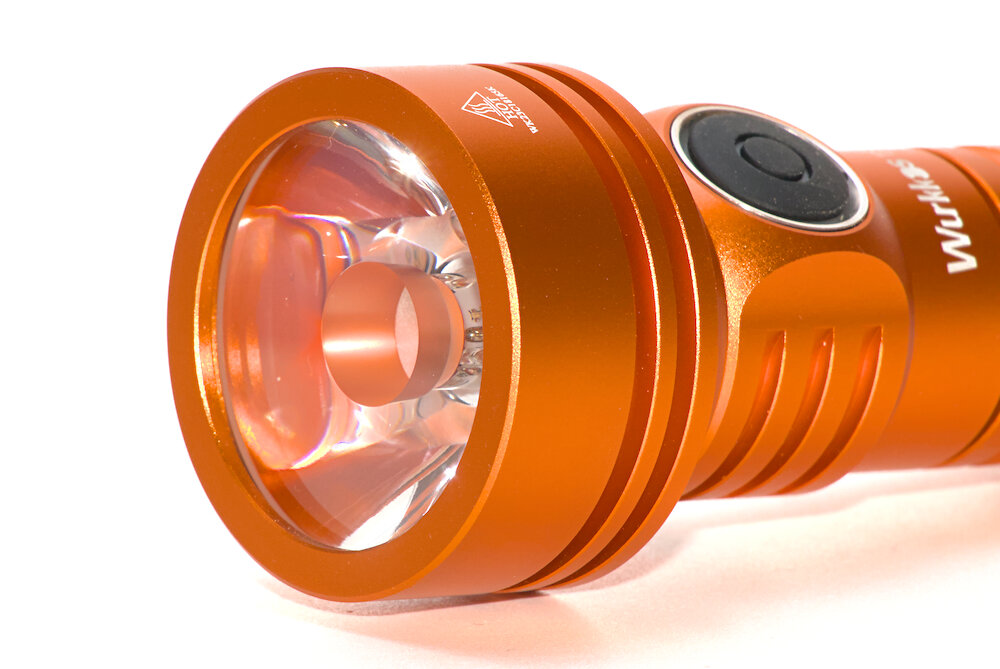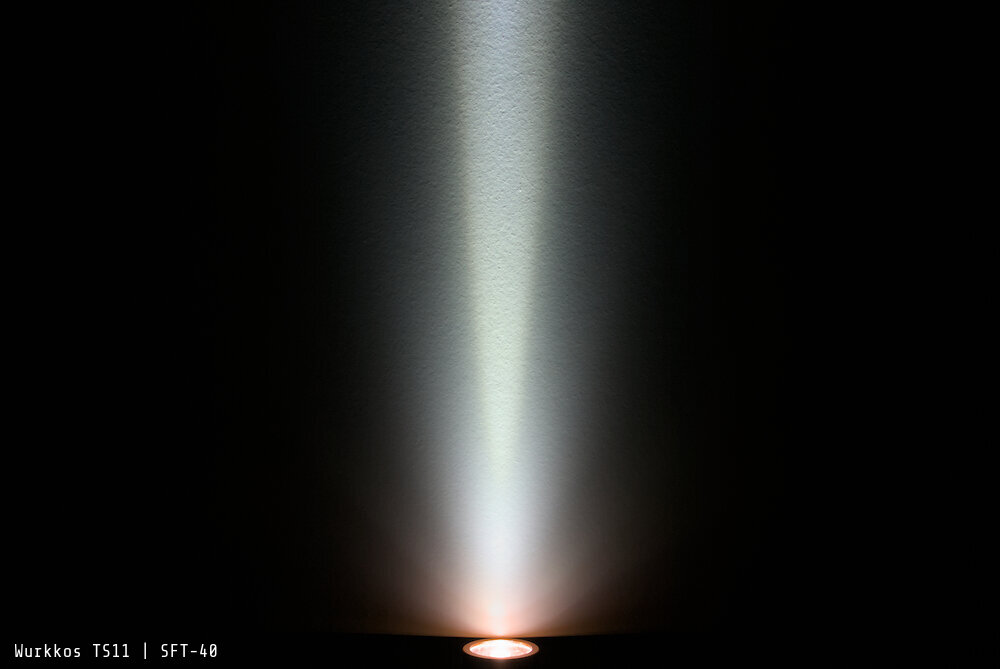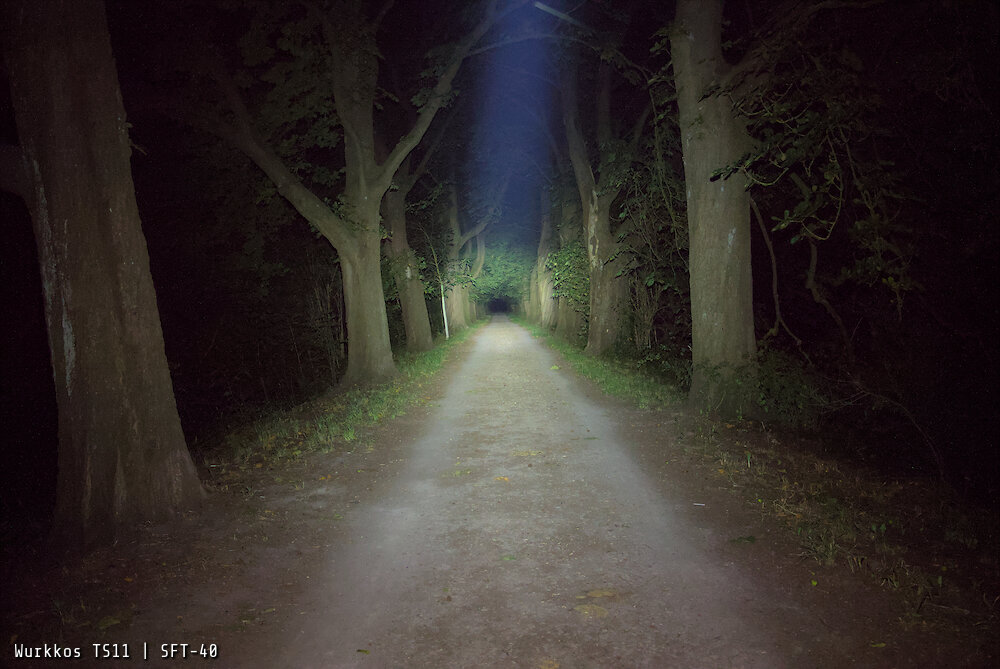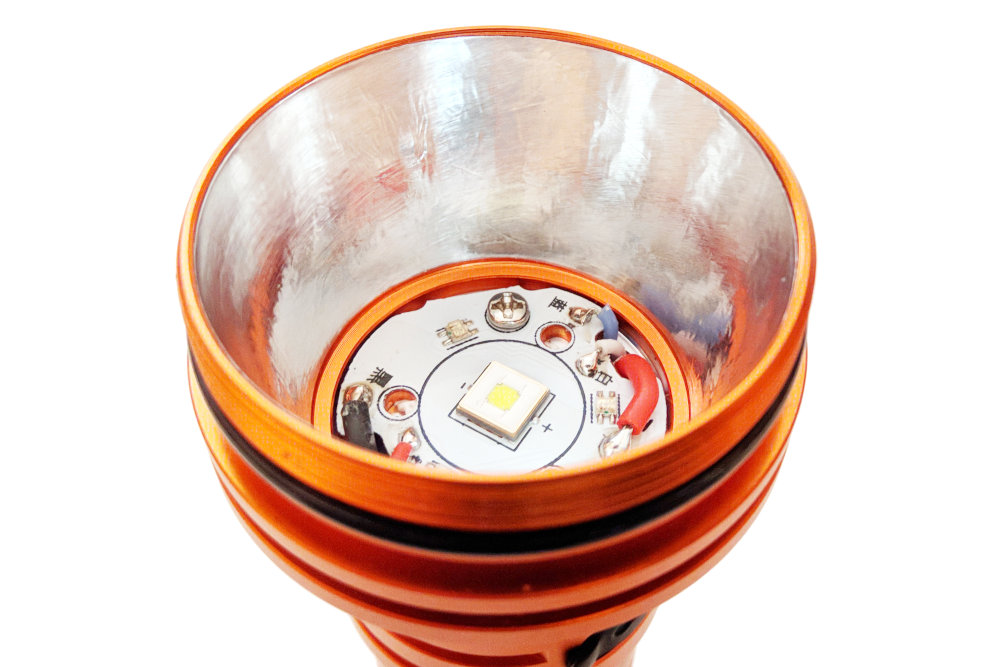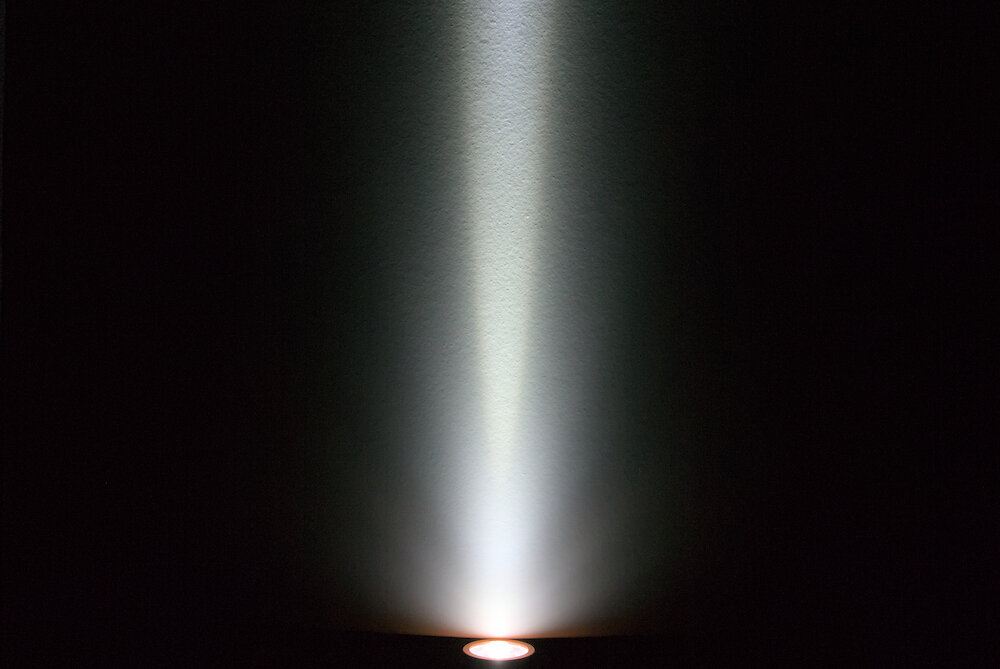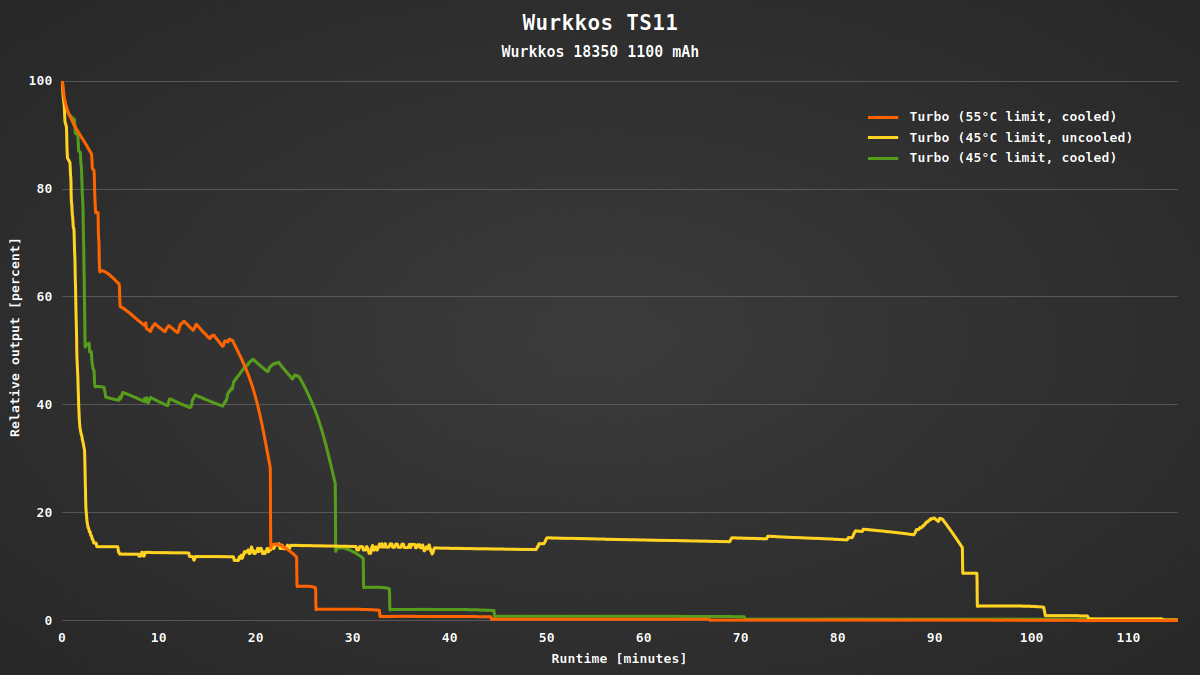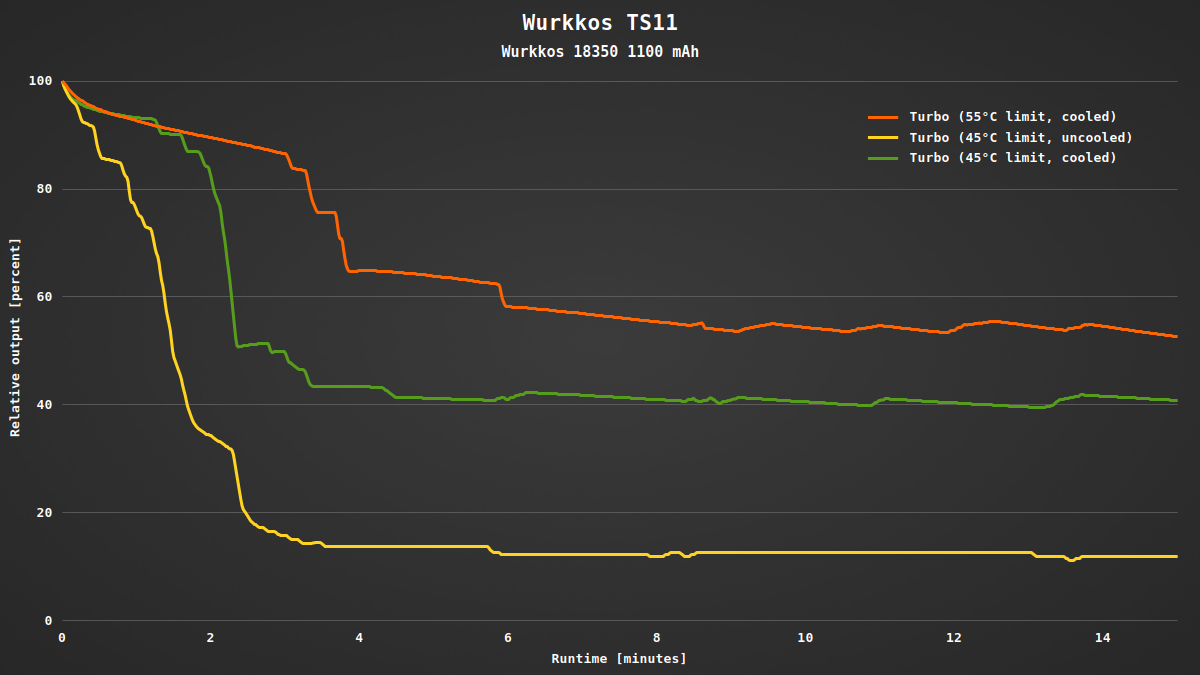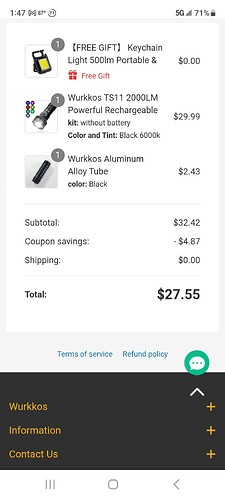You are looking for an inexpensive and small thrower for your pocket? With Anduril and fancy aux LEDs? Then try out the Wurkkos TS11!
I’ve got this flashlight for free from flashlightgo in return for a review. Thank you very much!
This review is also available in German on my website: SammysHP Blog › Wurkkos TS11
Supplied parts and hardware
- 18350 Li-ion battery with 1100 mAh (3.93 V at delivery, button-top)
- USB-C charging cable
- Lanyard
- 2x replacement o-ring
- Manual (EN, DE, CN)
The flashlight comes in the nice box with magnetic lid and a foam insert. The manual is just a quick start guide and doesn’t cover all details of Anduril. It’s better to refer to the official manual.
Length: 90 mm
Head diameter: 40 mm
Weight: 90 g + 22 g for the battery
In this review I’ll compare the TS11 with the Sofirn IF22A (same TIR optic and same LED) and the Noctigon KR1 with Osram CSLPM1.TG (W2) in a reflector.
The TS11 is available in black and orange. Of course I’ve chosen the orange variant! It has a simple design with some rings and without knurling.
Opposite to the switch is a USB-C charging port. The battery is charged with about 1 A so that charging takes around 2 hours. It’s rather high for the small battery, but still acceptable. During charging the LED in the switch lights up in red, after finishing it switches to green.
A silicone cover protects the USB port from water and dirt. It sits deep and flat, closes very easy, but won’t open by accident. From all the flashlights that I have with such a silicone cover, this is the best!
The tailcap has a hole to attach a lanyard. Unfortunately it is located in such a way that it prevents tailstanding when a lanyard is used. There would have been enough space to find a better place and maybe even fit a small magnet.
Without a lanyard the flashlight tends to roll away on a flat surface. The cutouts of the tailcap aren’t enough to stop it when it’s already moving. The TS11 doesn’t come with a clip and it’s also not designed to be used with one.
The battery tube is symmetric. That makes the little polarity indicator pretty useless. Just insert the battery with the positive side towards the head, as usual for most flashlights.
It has trapezoidal threads with a single o-ring on both sides. Springs on both sides allow for button and flat top 18350 batteries. On the driver you can see the three flashing pads to update the firmware.
Both the design and machining are simple, but well executed. It’s rated at IPX8 and should be able to survive submersion up to 2m and drops from a height of 1m.
The battery tube is compatible with the tube of the FC11 and FC12. This allows you to use the TS11 with 18650 batteries! You can get the FC11 tube for less than $3 directly at wurkkos.com.
User interface and features
The TS11 has a large silicone side switch. Surprisingly it works very good, is easy to find, is flat and feels good.
Located behind the switch and the TIR optic are RGB aux LEDs. Both switch together. Low level has the perfect brightness to be seen only in the dark, high level is very bright (but needs more power, of course).
The TS11 comes with Anduril 2 (version 2022-07-25 0715). Everyone here should already know what Anduril is, so I’ll skip this part of the review. If you don’t know it yet or need help, you should refer to the official manual.
It’s possible to update the firmware, which is explained very well in this guide.
Illumination
The TS11 uses a Luminus SFT-40, about 6000 K, low CRI, but a great LED for throwers due to its small and slightly rounded area. It’s the same LED used in the Sofirn IF22A.
It also uses the same TIR optic as the IF22A. So in theory they should produce more or less the same beam.
But there are still some differences. The spot of the TS11 is slightly smaller, but it spill more focused and a little brighter. On the other hand the KR1 creates a very even spill with a hard cutoff.
In practice the differences between the TS11 and IF22A are very small. Both have a very nice beam because the spot has a smooth transition to the spill, which slowly drops off.
At short range you can clearly see some orange in the spill. It’s caused from the inside of the head which is also orange. So I’ve disassembled it and covered the inside with some self-adhesive aluminum tape.
This removes most of the orange spill. The remaining part comes from the outside of the bezel and can be removed with a black marker or a 3D printed insert.
Driver and runtime
The specifications say that the TS11 achieves 2000 lm with an intensity of 94750 cd (616 m).
Because all steps can be configured, I’ve limited my measurements to the lowest level (1/150) and turbo (150/150), immediately after turn on.
| Mode | Current |
|---|---|
| Turbo | 6.34 A |
| Low | 1.32 mA |
| Off | 14 µA |
6.34 A from this small battery is more than I expected! Even with a Keeppower IMR18350 with 1200 mAh it’s not much more.
For the same reason I did the runtime tests only for turbo. There you can see how the temperature regulation works. It’s pretty good and can use the full potential of the small host. While the battery discharges, the brightness slowly rises because the driver gets more efficient with lower voltage, so the temperature decreases.
At the end the brightness is limited by the voltage. It doesn’t turn off completely, because Anduril reduces the brightness when the voltage gets low and it will still run some time at the lowest level. When the voltage is below about 2.85 V the flashlight turns off.
The TS11 uses a simple FET+1 driver. 350 mA from a linear regulator, then direct-drive via a FET. Brightness is regulated via PWM, but Anduril makes sure that the frequency is so high that you can’t see it.
Power consumption by the aux LEDs is interesting. On the highest setting (white on high) it needs more than ten times the power of the regular main LED on its lowest level. This would drain the battery in just three days.
| Color | Low | High |
|---|---|---|
| Red | 154 µA | 8.56 mA |
| Yellow | 398 µA | 11.16 mA |
| Green | 170 µA | 3.12 mA |
| Cyan | 306 µA | 8.16 mA |
| Blue | 126 µA | 5.46 mA |
| Magenta | 260 µA | 13.08 mA |
| White | 440 µA | 15.41 mA |
Conclusion
The Wurkkos TS11 is a fantastic, small pocket thrower that can easily keep up with larger flashlights such as the Sofirn IF22A in terms of range and brightness. Anduril offers many functions and can be updated and extended with some experience. On the other hand, this complexity can easily be overwhelming. (Wurkkos has just released the TS11S, which is the same flashlight, but with a simper user interface.)
If you are bothered by the orange in the spill, you can either use the black version or apply my modification with the aluminum tape. Apart from that the TS11 is exactly what I expected.
